Eifel Rallye Festival or Group B(onkers)
Hello Carmrades!
Hello Carmrades!
On 23rd of July of last year I visited Eifel Rallye Festical, a callsic-rally dedicated motorsports event only 20 km away from my dear Nürburgring. God I love that place. As you can see above, I made a video. The problem was, that I wasn’t feeling very well at the moment of shooting (understatement) caused by exhaustion from work that week and I also spent whole day shooting DN12 video before rushing to Eifel Rallye. I personally find the video below my average, therefore I want to make it up with you by presenting you this article, with extra footage from that day accompanied by extra facts on the cars.
Enjoy!
Lada 2105 VFTS
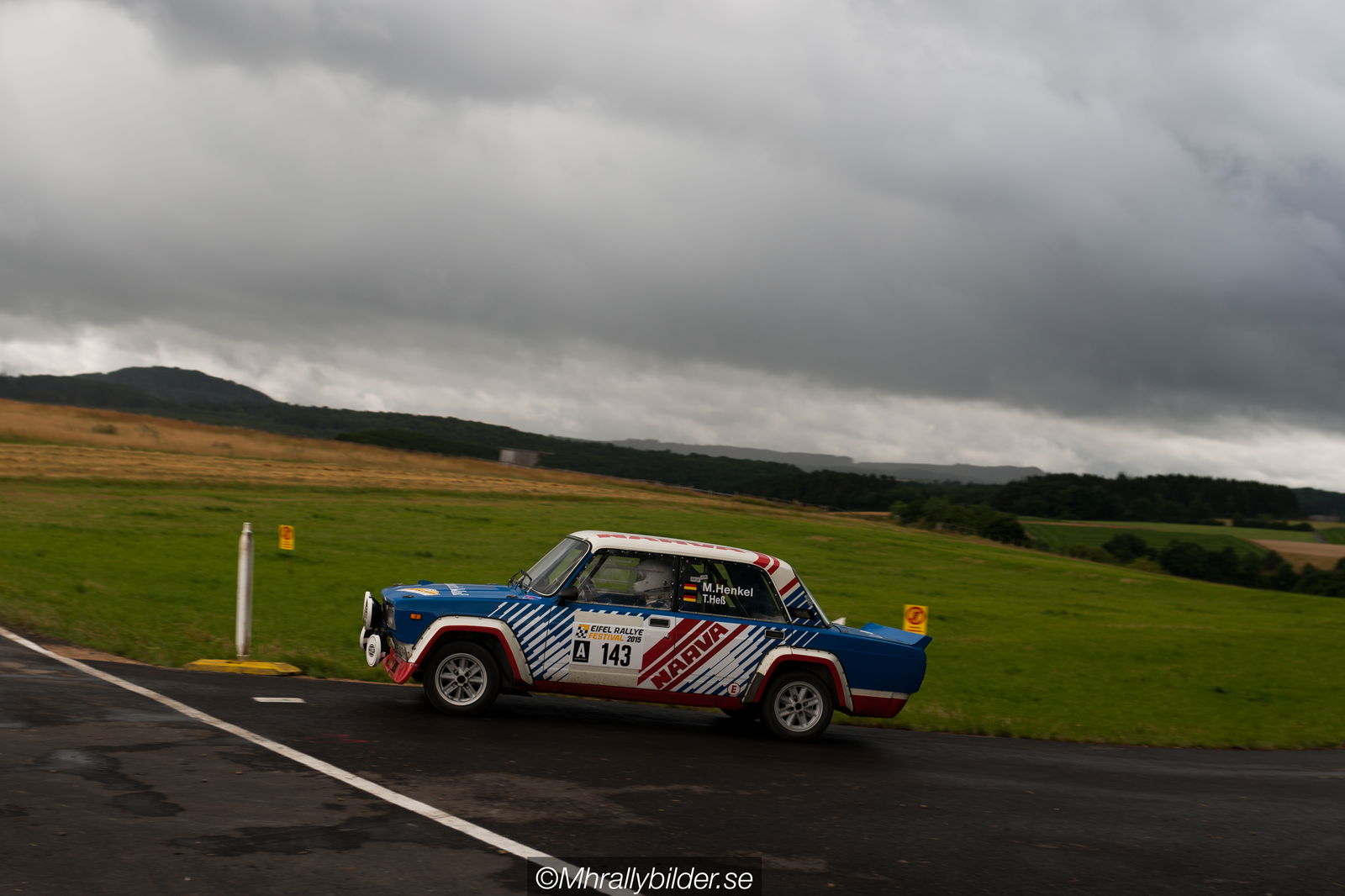
I really have to constrain myself from not talking pages long about the Lada, especially the 2105, so I’ll keep it short. The 2105 you see here is a VFTS which stands for Vilniusskaja fabrika transportnyh sredstv or “Vilnius Automotive Factory”. First model produced in Vilnius factory was Lada 1300 with engine enlarged up to 1600 cc and tuned to 130-150 HP back in 1976. But it gets crazy in 1985 when they developed mid-engined rally car under Group B rules “Lada-2108 EVA Turbo” with 1860 cc, 16 valve, turbo (270-300 HP) engine (stock 75 hp!) Knowing that a Lada was built for famous Group B rally, I can die as a happy Russian.
The Lancias
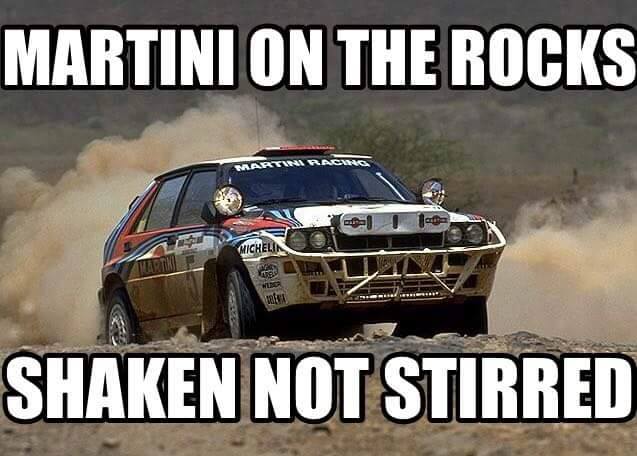
Lancias were highly popular during the golden era of rallying back in the 80’s. Yes yes, they are STILL popular because of their contributions in form of
Lancia Rally 037
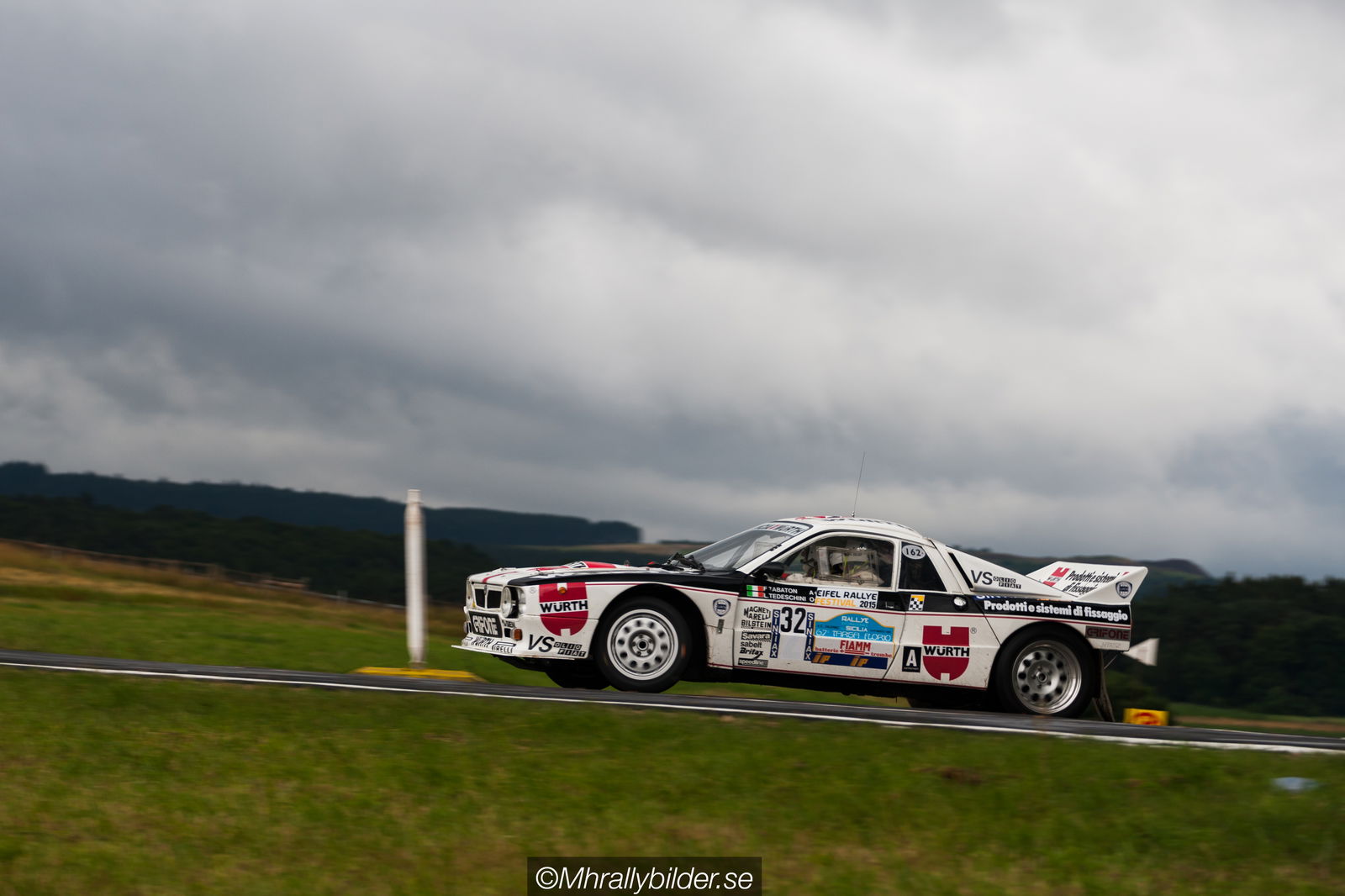
Introduced in 1982, this 350 hp RWD rally car was having some issues in its introductory year, but manager to win the 1983 rally championship with the almighty Walter Röhrl behind the wheel even though it received HEAVY competition from the Audi Quattro who finished 2nd in 1983 with 2 points difference. Although Lancia got the manufacturer’s title, Hannu Mikkola of the Audi team took the driver’s title of that year and Röhrl finished second, but he had his glory the precious year, something I’ll tell you more about later.
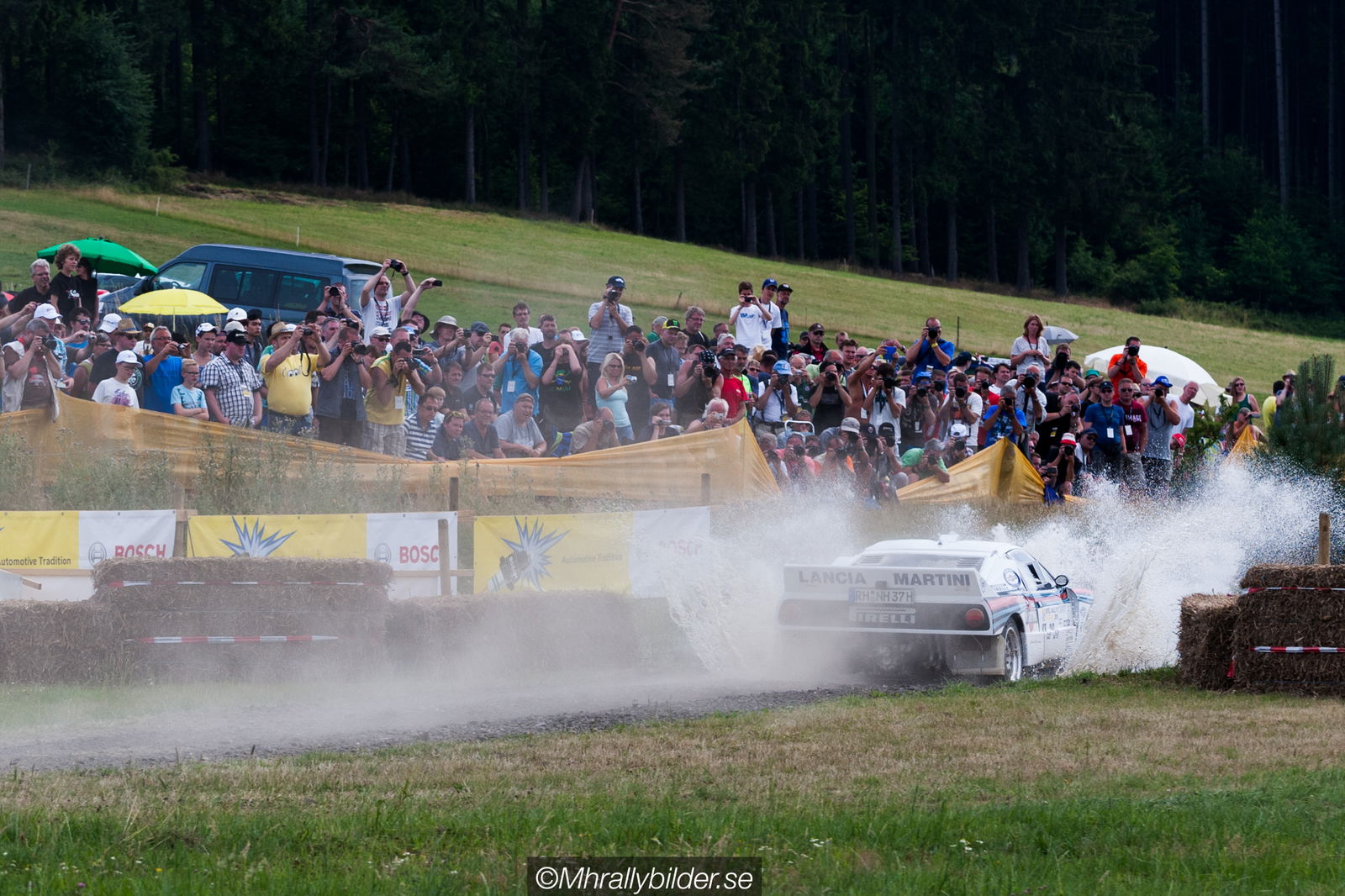
Lancia Delta S4
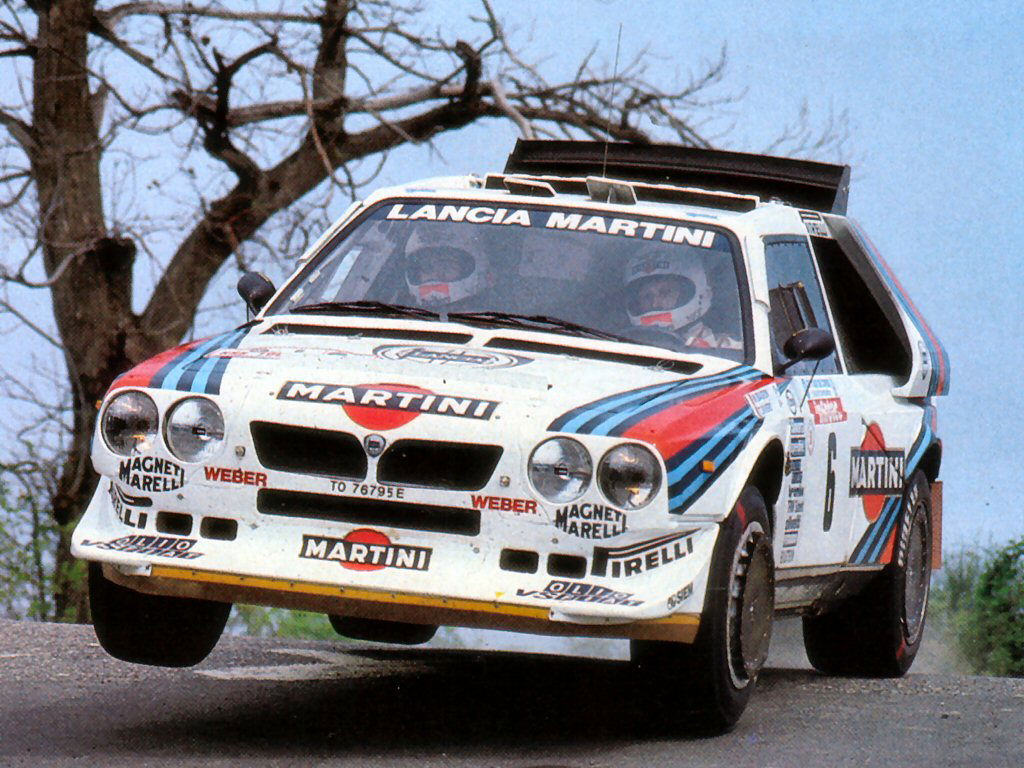
Which was a successor of the previous 037. The S4 competed in 1985 and 1986 WRC before the Group B was banned. Although the S4 was not that successful with “only” 5 wins in 2 years, there technology it carried was all Group Bonkers. How about 560 hp @ 890 kg ? The S4 was running “twincharging” technology, meaning it ran turbo and supercharger simultaneously. The engine was developed so strong, that the engineers tested it to run 5 bar of boost reaching 1000 hp. Unfortunately Groub B was banned in 1986 and Lancias image in 1987 was the
Lancia Delta Group A
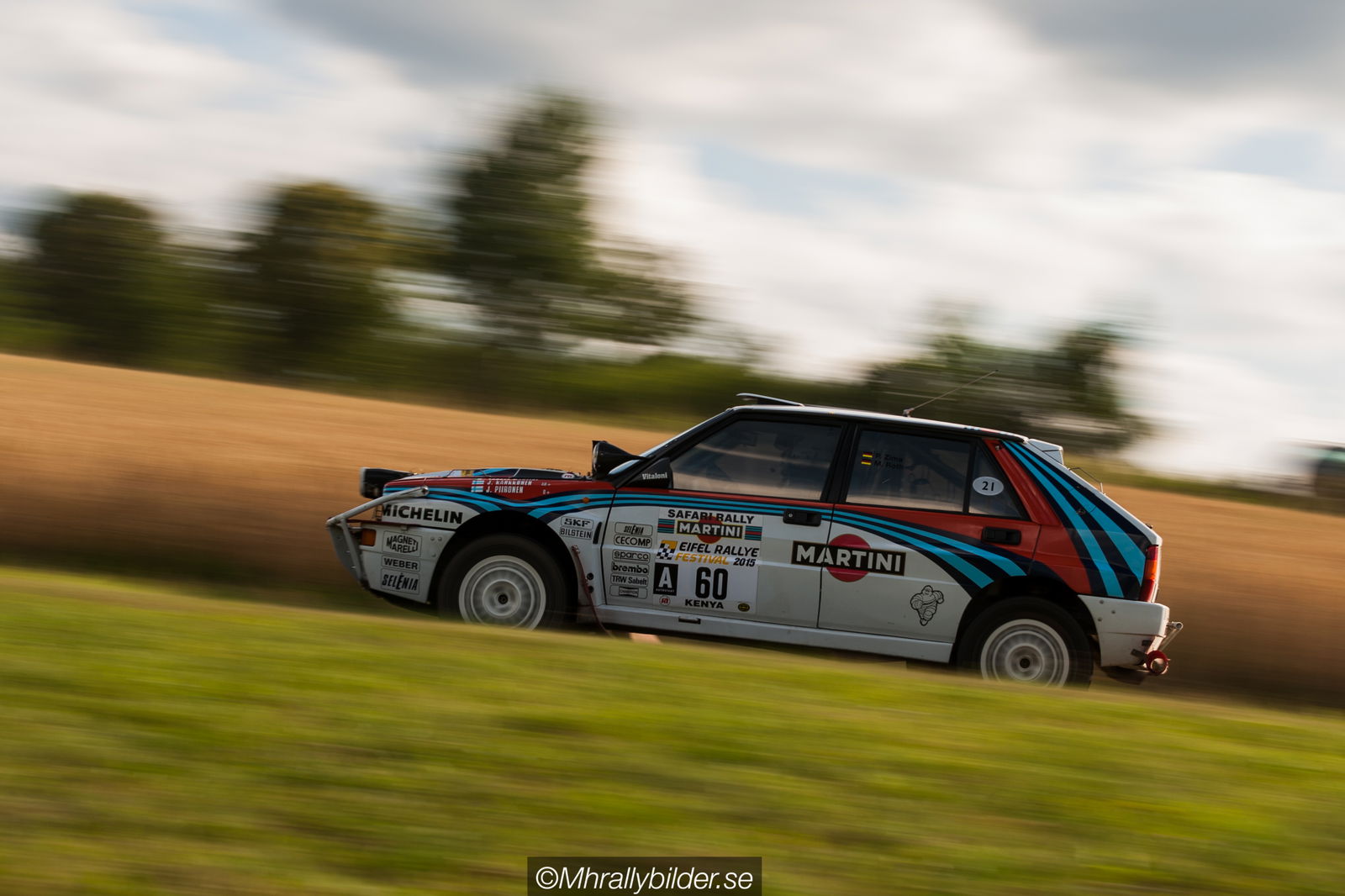
Also known as Integrale HF as production car. Which was the least crazy of the Lancias, but most successful of them all. How successful? How about 46 WRC victories overall and winning the constructors’ championship a record six times in a row from 1987 to 1992 plus four drivers’ championship titles? The tech behind it was quite simple, AWD and 2.0l turbocharged 300 hp engine, although most say that the cars were running 400 hp thus breaching the 300 hp limit of Group A. Which seems normal to me, I mean come on, you just can’t switch from Group B “just like that”.
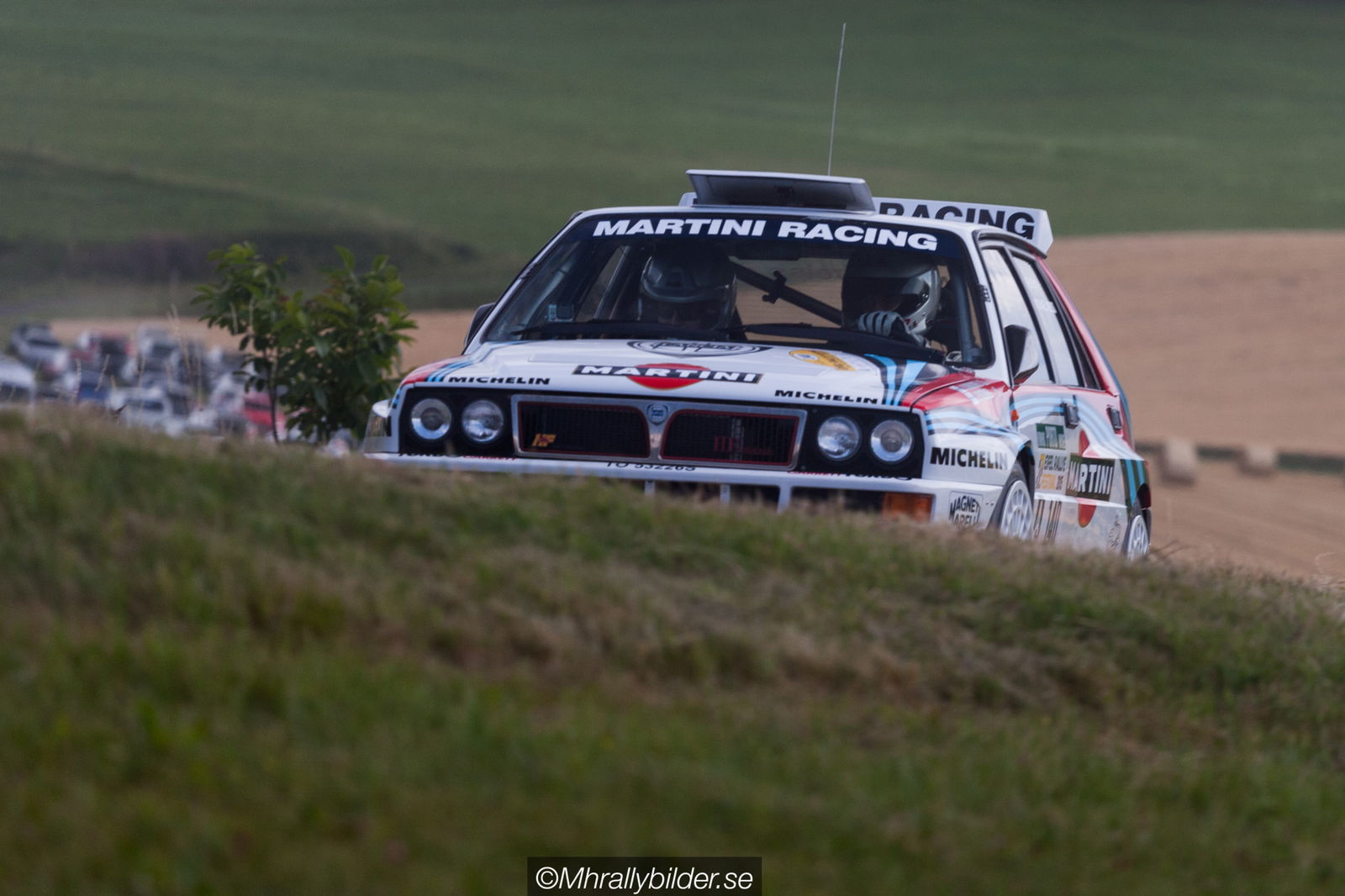
Porsche 911 SC RS
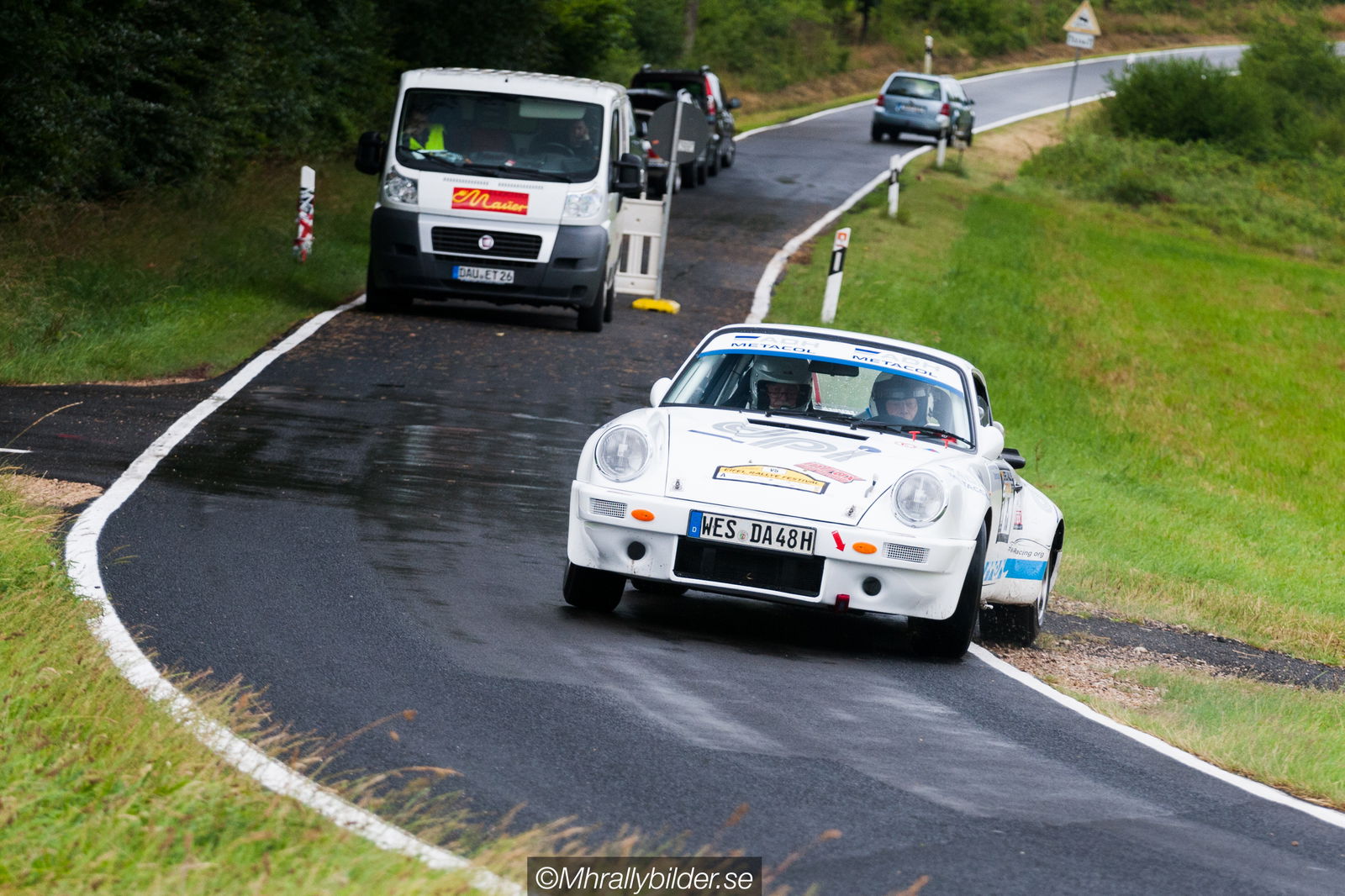
Porsche = motorsports. Although not everyone assumes that Porsche = Rallying. Well, for those I highly suggest visiting some classic rally events to be surprised. The 911 SC RS may be not as successful as others in WRC, it does not mean it did not win plenty of other “smaller” events while being very impressive to watch.
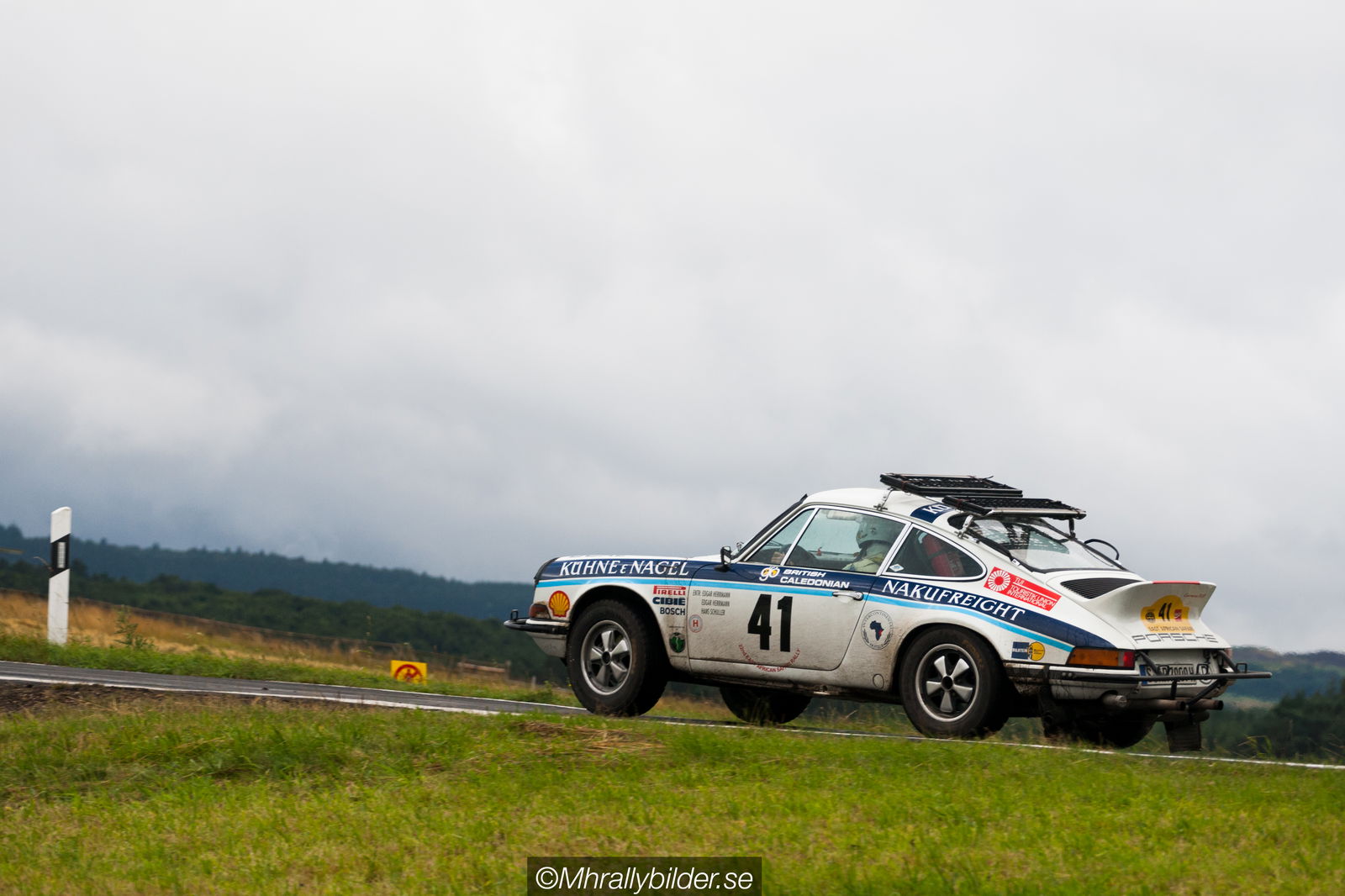
I also must say that the 911 SCRS was brought to Group B rally by Porsche as a warm-up as they were developing the Porsche 959 to enter Group B. Yes, that 959.
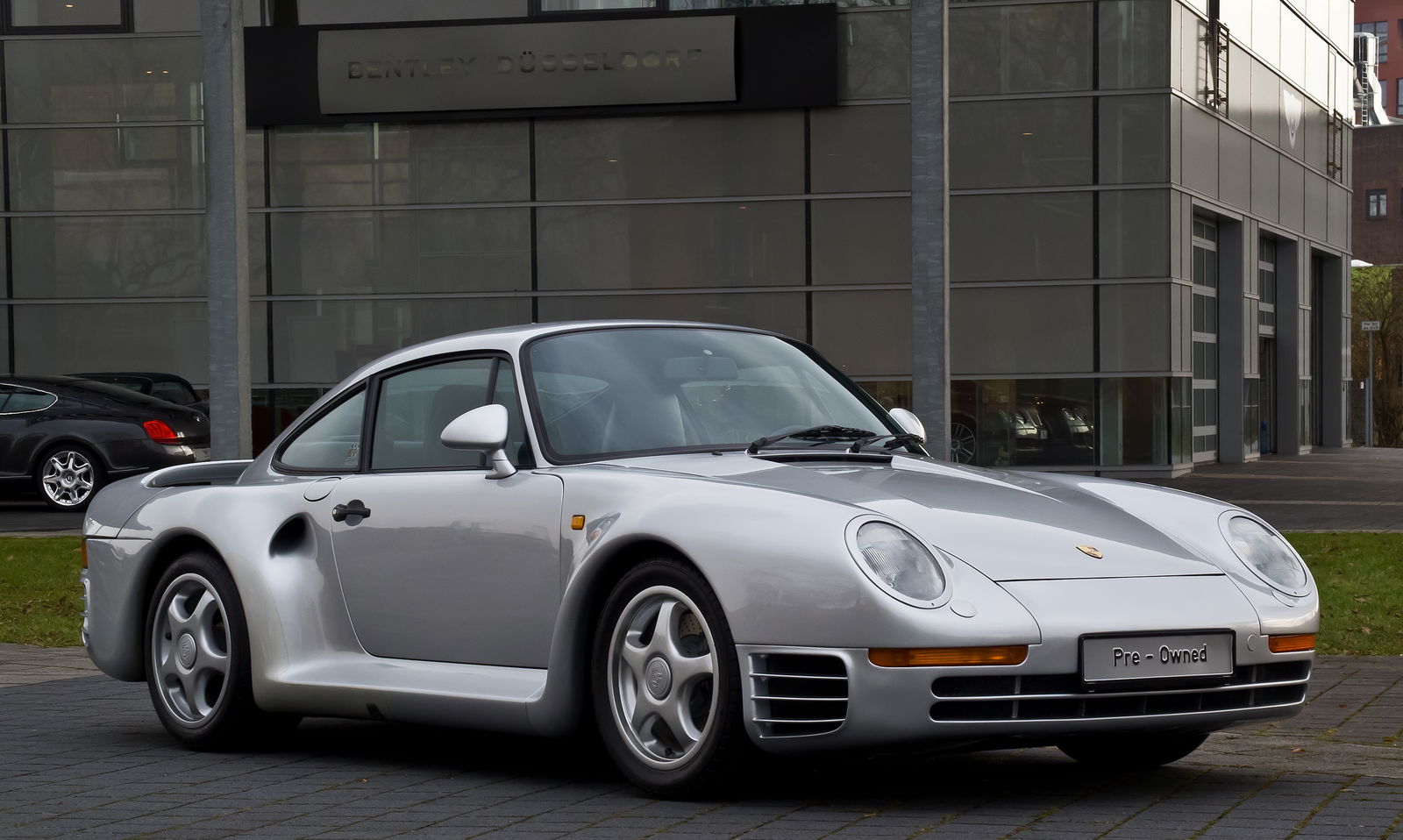
Unfortunately, the Group B was banned before the car’s release in 1986. Nevertheless the 959 did a lot for Porsche. It had the record of the fasest street-leagal production car which was 195 miles per hour (314 km/h) which was beaten the following year in 1987 by the F40 (201 miles per hour or 323 km/h). Also, the successful and impressive AWD Turbocharged technology convinced the Porsche executives to continue to use it on the 911 Turbos.
Although it was a classic rally event, here are some bonus pics of “another” Porsche competing that day.
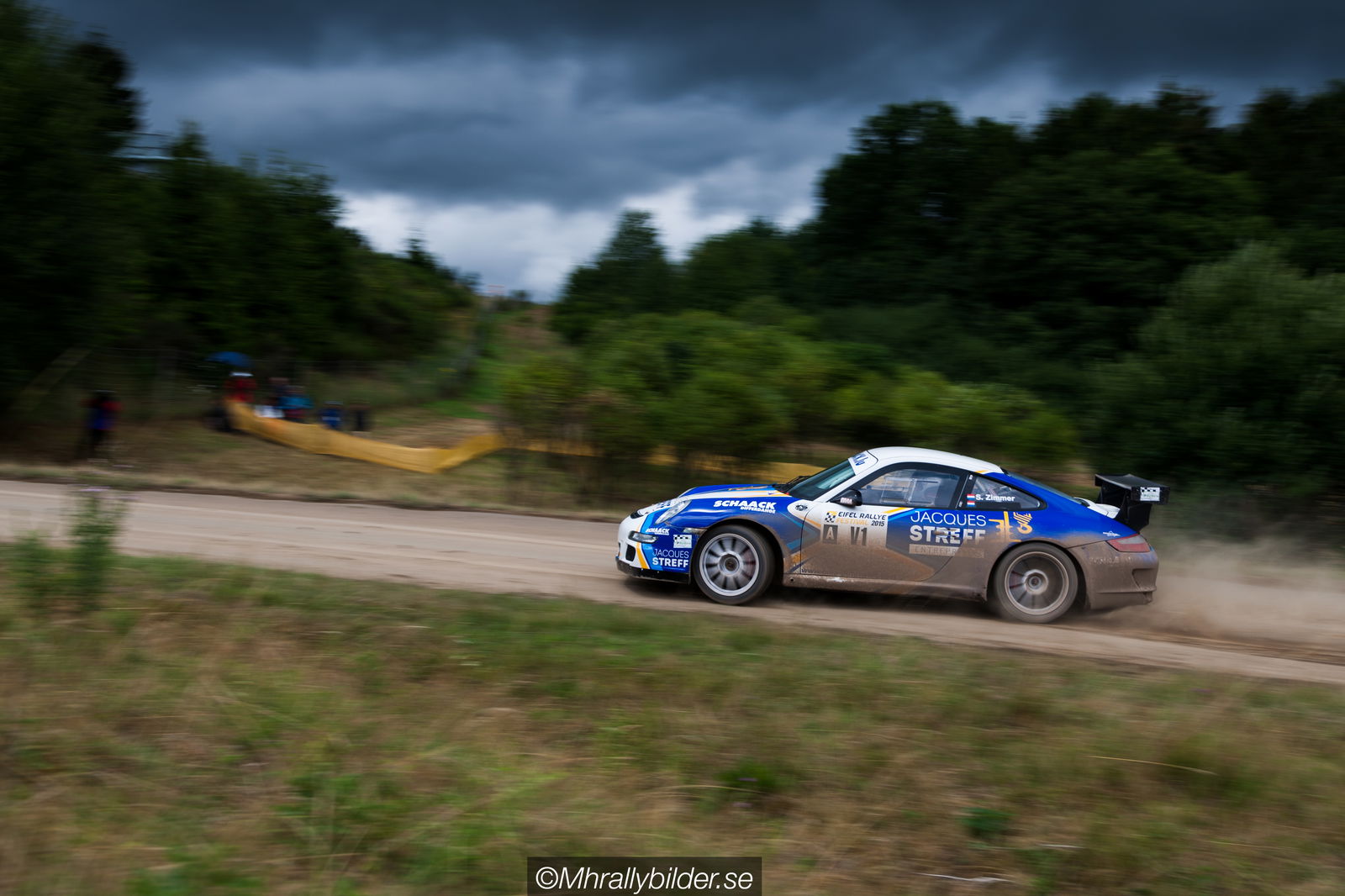
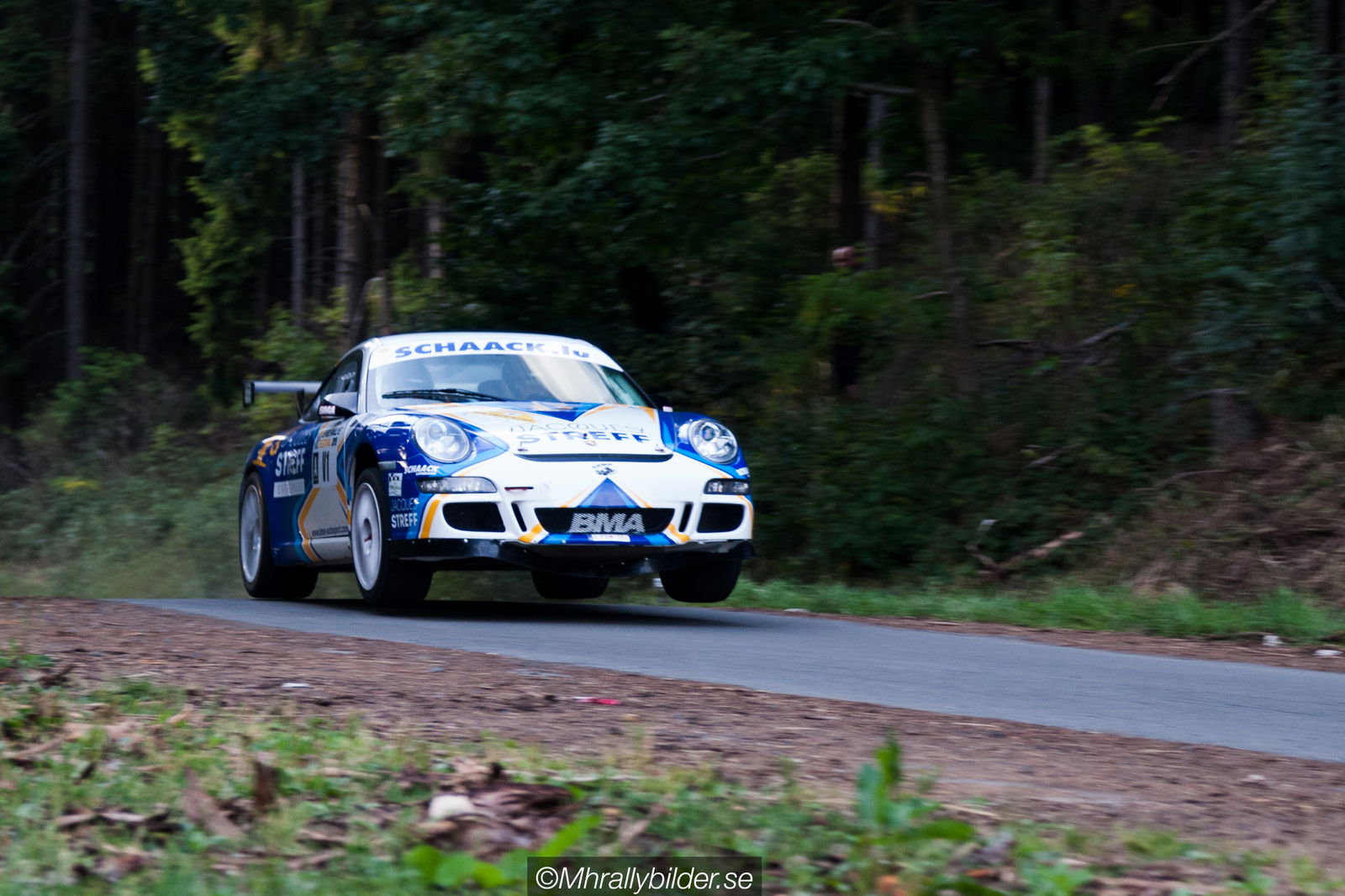
And every win needs to have a fail, so here you go:
Citroen DS
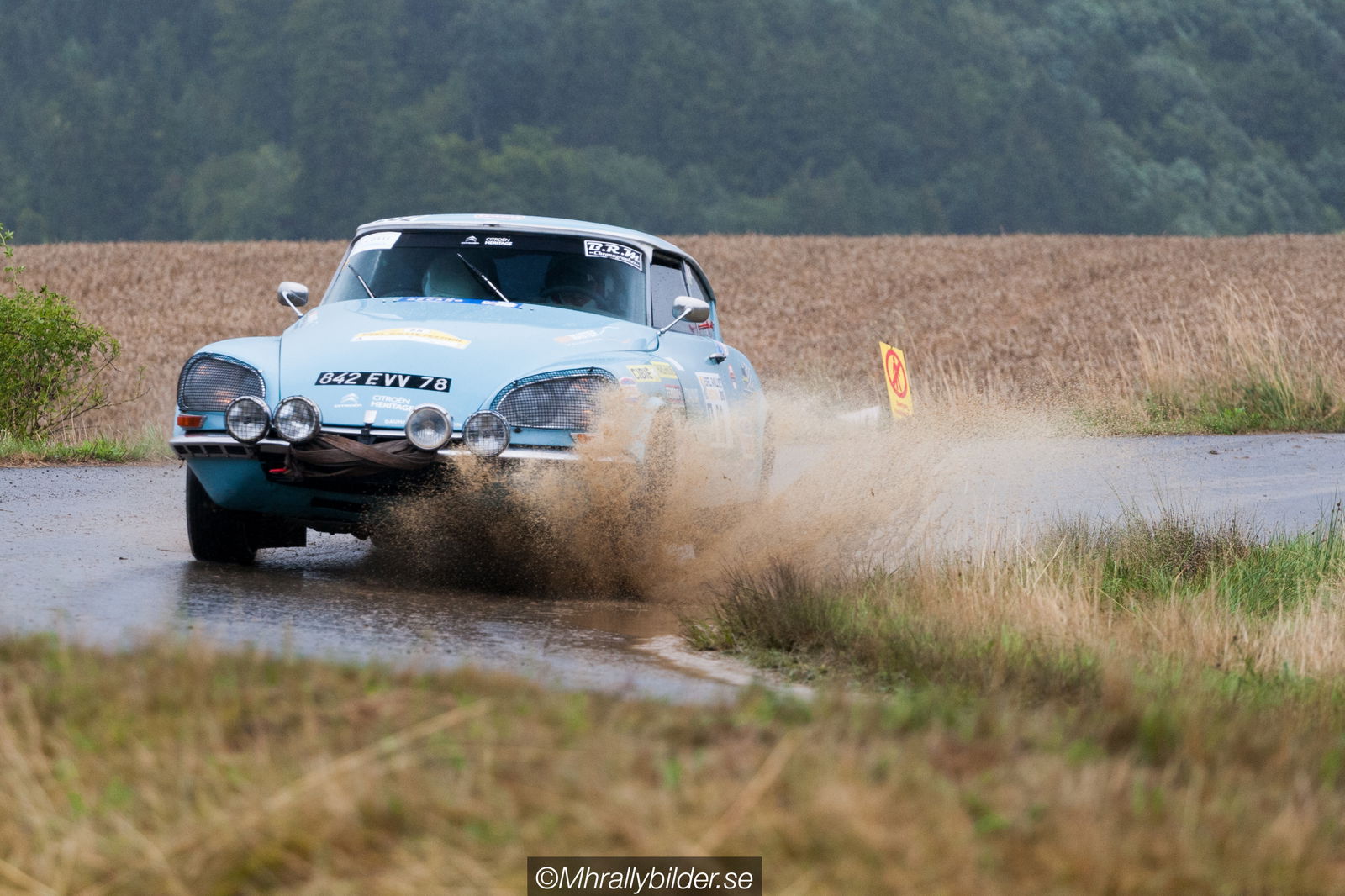
Unlike the Porsche which may not be associated with rally by the most of you, the Citroen may not be associated with motorsports at all! Introduced in 1955, this car set new standards for automotive design, handling and most importantly ride quality and comfort. The latter has definitely NOTHING to do with rally. However, it had won the 1959 and 1966 Monte-Carlo Rallies and lots of other less-famous events such as 1000 Lakes Rally in 1962.
Here is also an old-school pic that resembles badassery
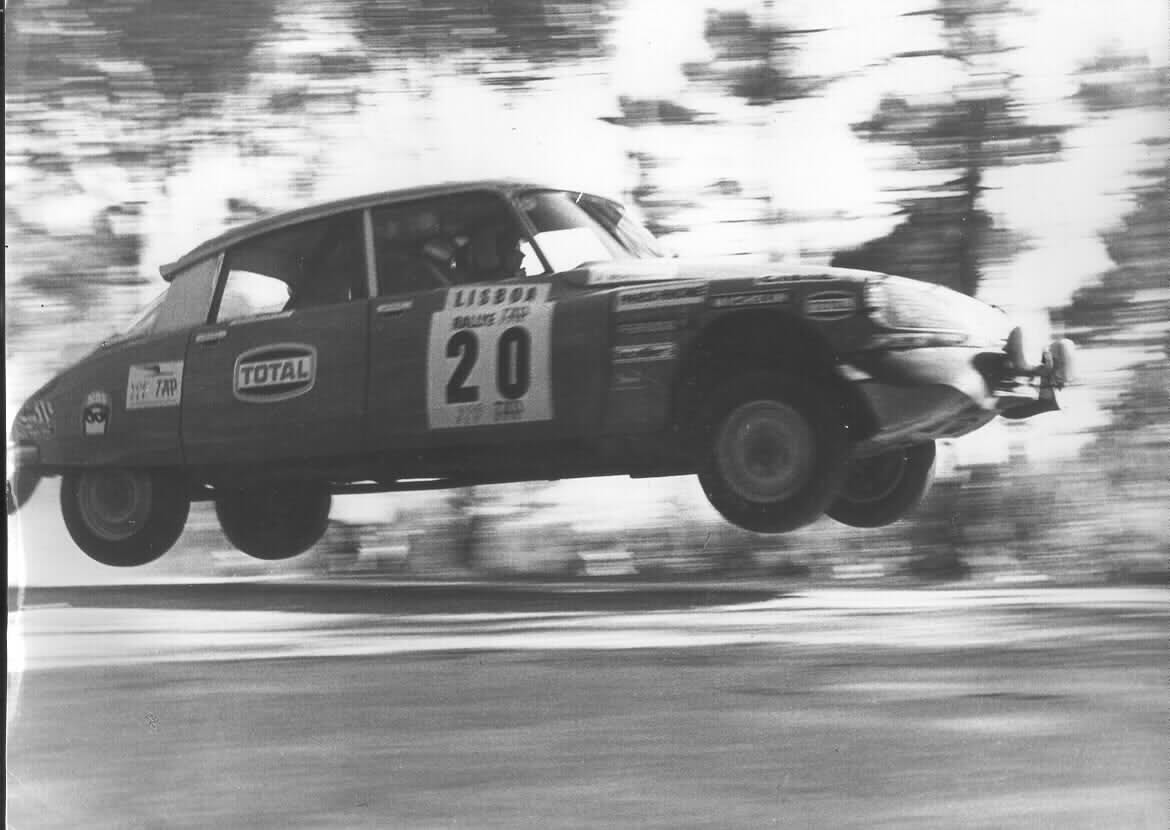
And some footage, accompanied by French narrator
Subaru Impreza 555
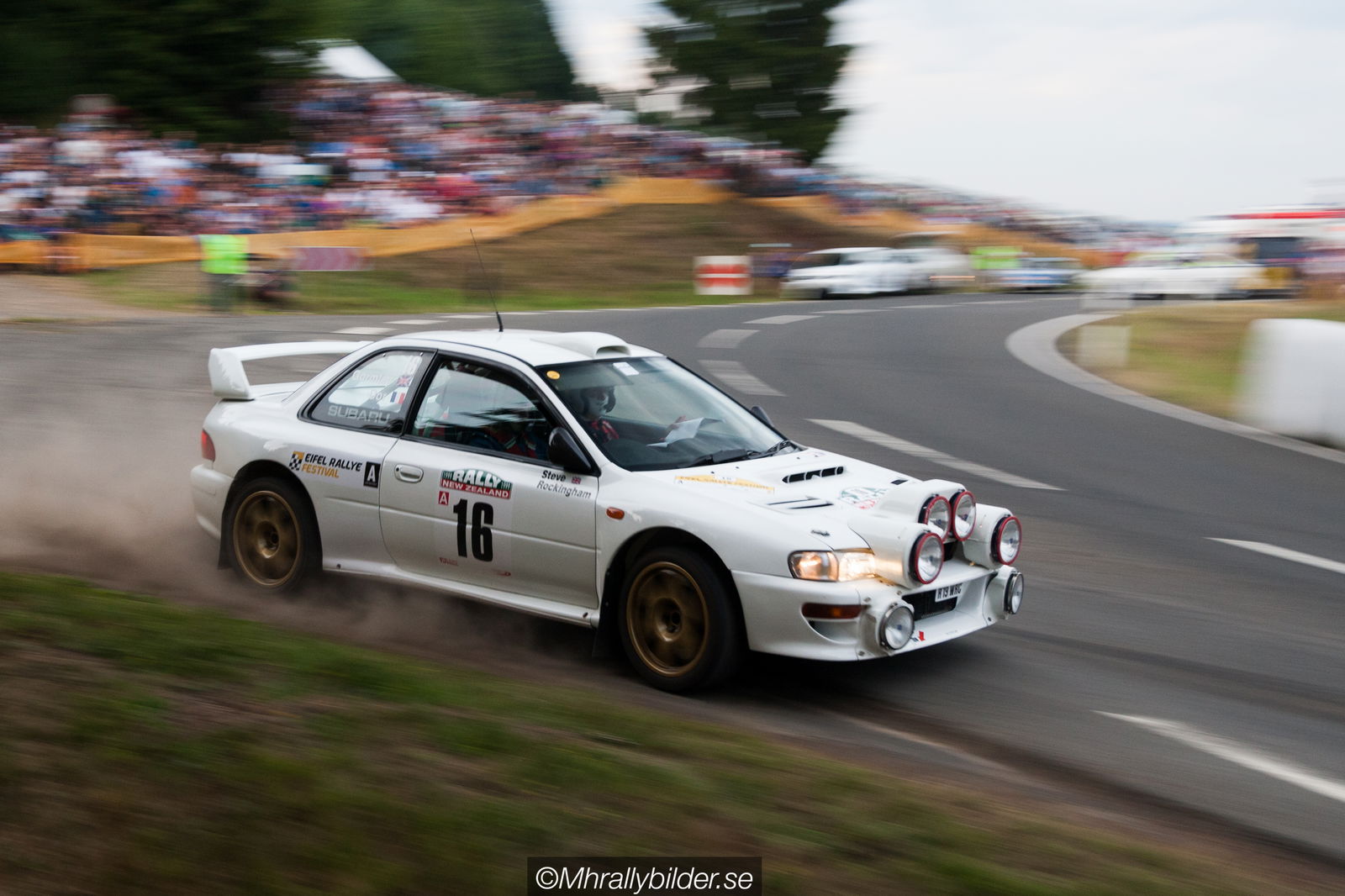
Although for some reason there were no 555 cars at the event, let’s talk about those anyway. The car was debuted in 1993 following the Subaru Legacy RS rally cars from previous years. Turbocharged 4 cylinder boxer engine with innovative Subaru Symmetrical AWD system piloted by the great Colin McRae and Richard burns resulted in winning the manufacturers’ championship three times in 1995, 1996, and 1997, and the drivers’ championship in 1995.
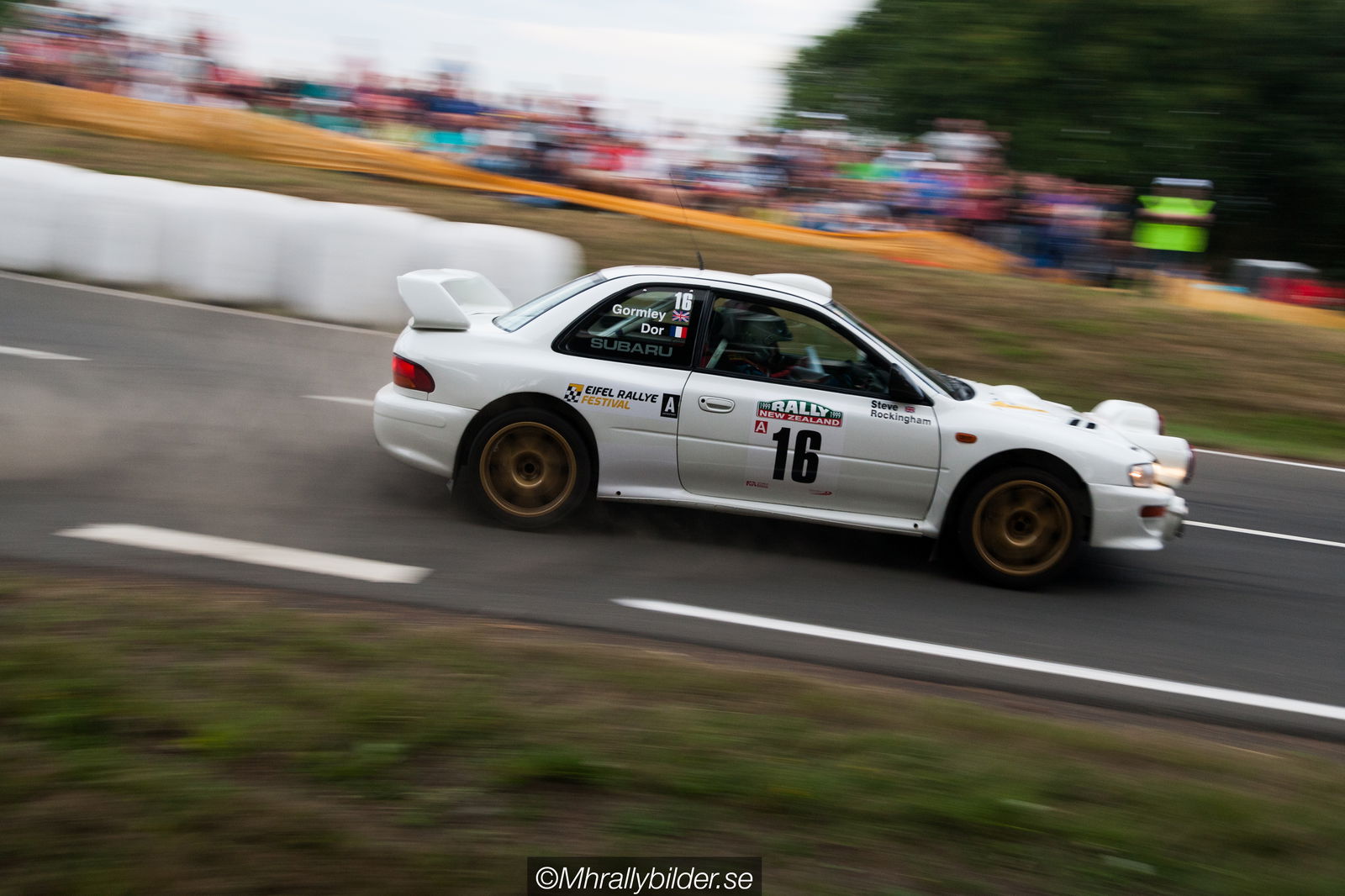
Oh, did I tell you that my first car was a GC8 that I ended up converting to a 705 hp Time Attack car?
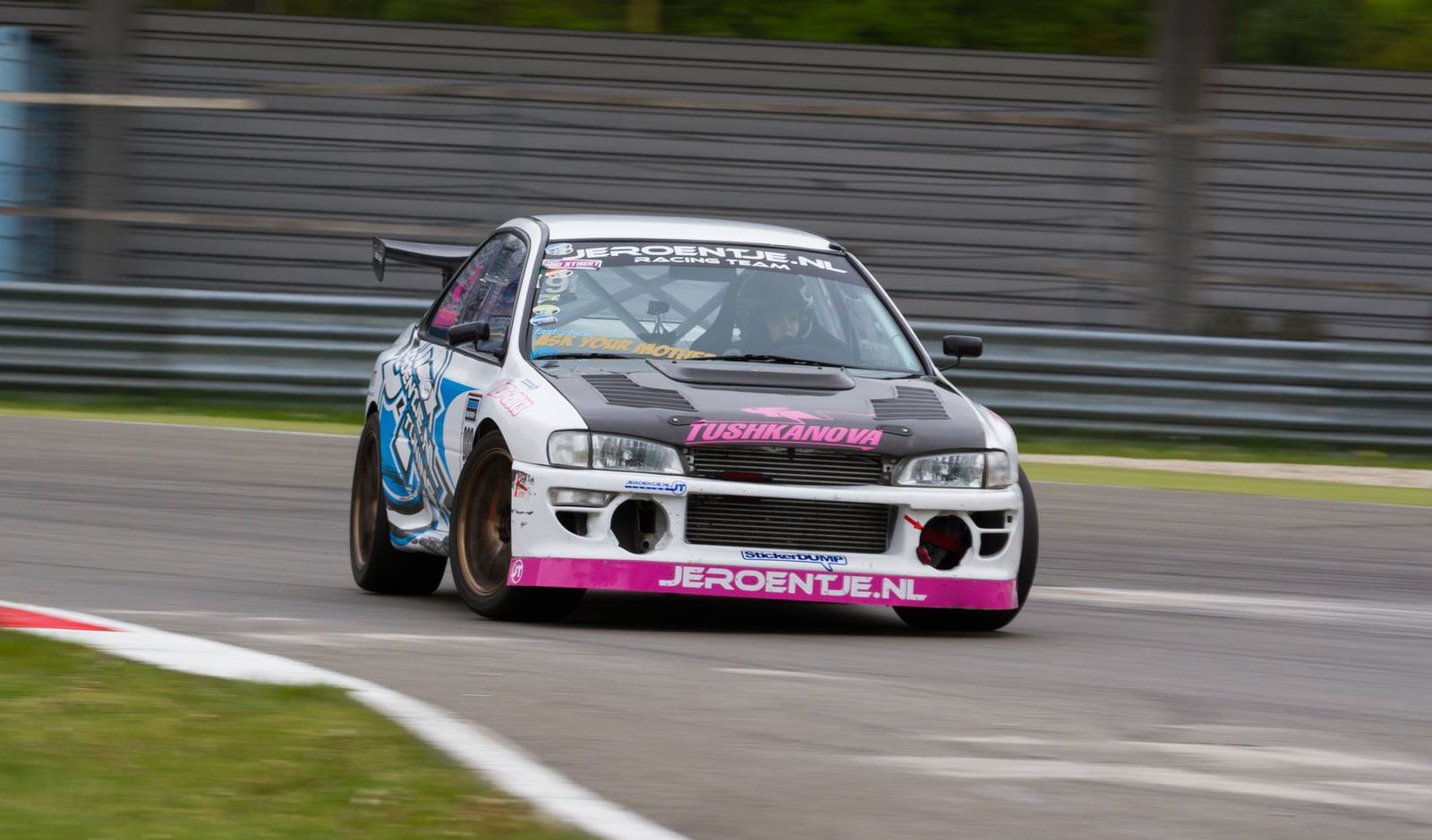
Mercedes R107 500SL Rally car
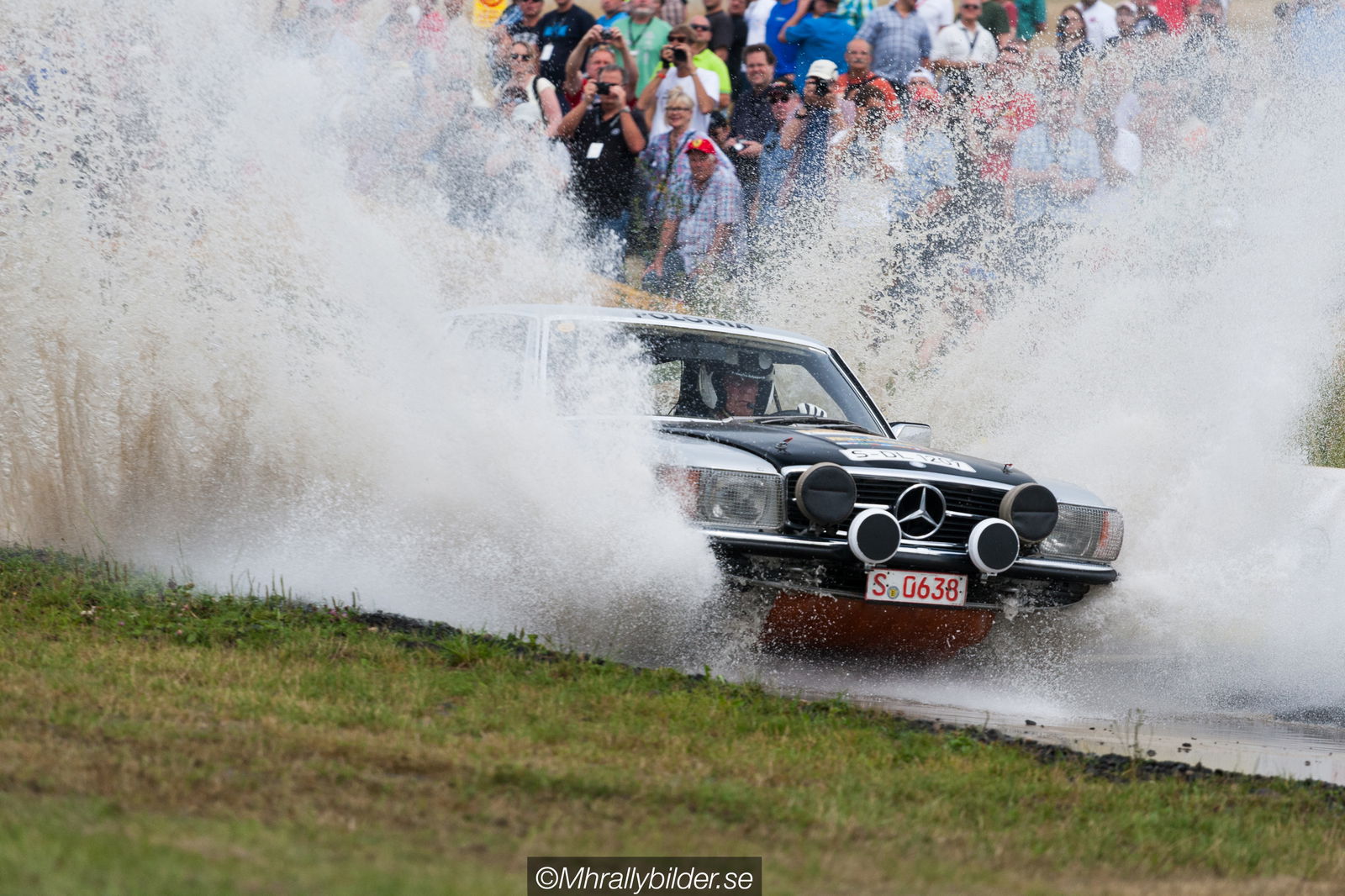
Which was too long and heavy to compete to win the big championships (329 hp @ 1,350 kg/2,976 lbs), it still deserves our admiration. Oh by the way, can someone recognize this man driving it?
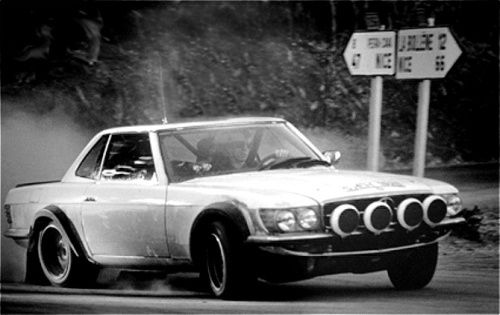
Nissan 240RS
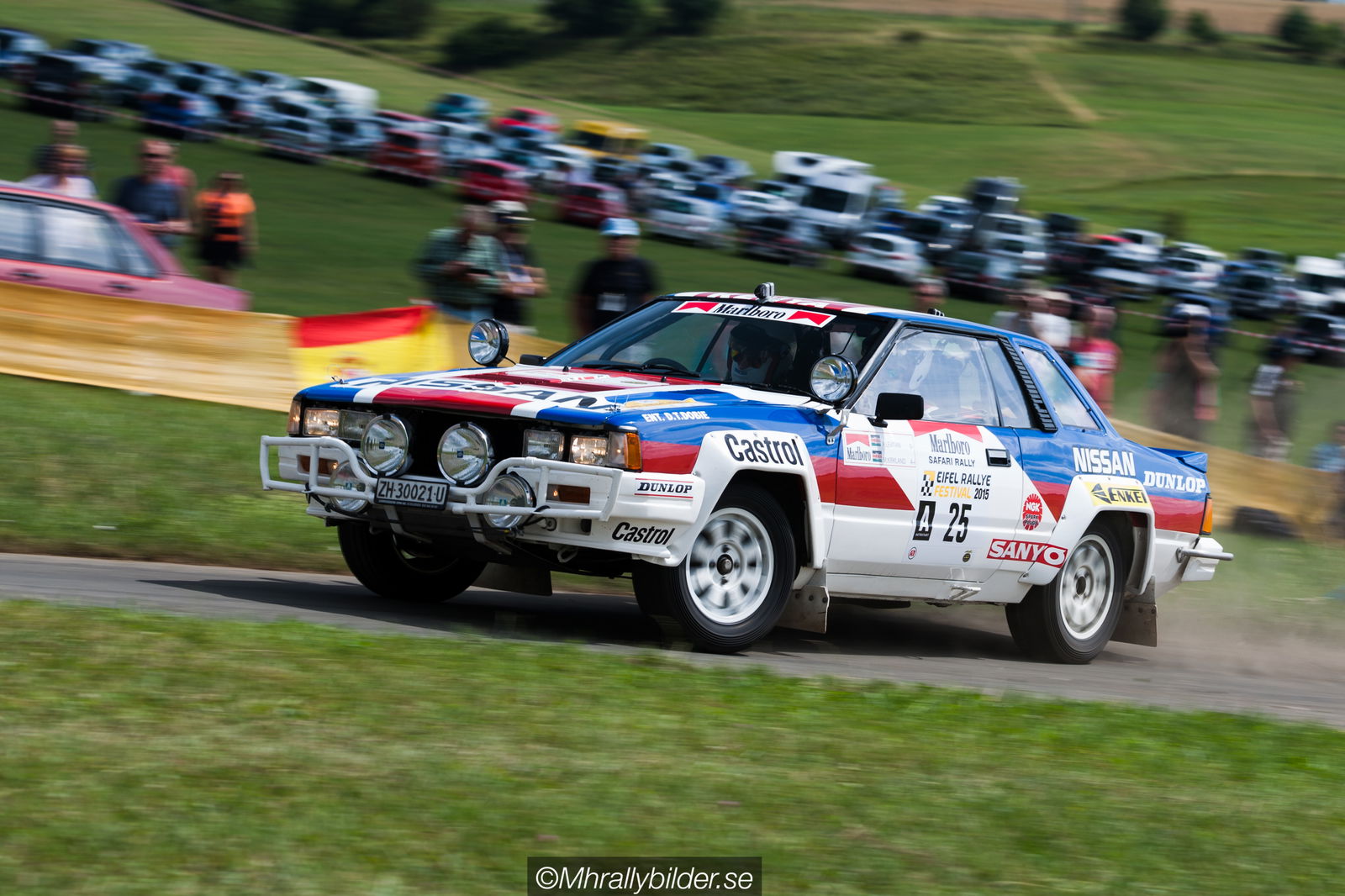
Although the 240RS competed in Group B, it quickly realized it was not competitive enough due to its relative low power (275 hp) and RWD unlike most AWD (All-Wheel Drive or All-Winning Drive) cars so it mainly focused on long-distance rallies rather than sprints. Still, with only 4 podiums (no first places) we can’t speak of a successful vehicle, but nevertheless being impressive and popular among private drivers with smaller budgets. And hey, the car is already great in rally by definition, when Colin McRae used to drive one. Also check out an article Speedhunters wrote on a 240RS
Audi Quattro
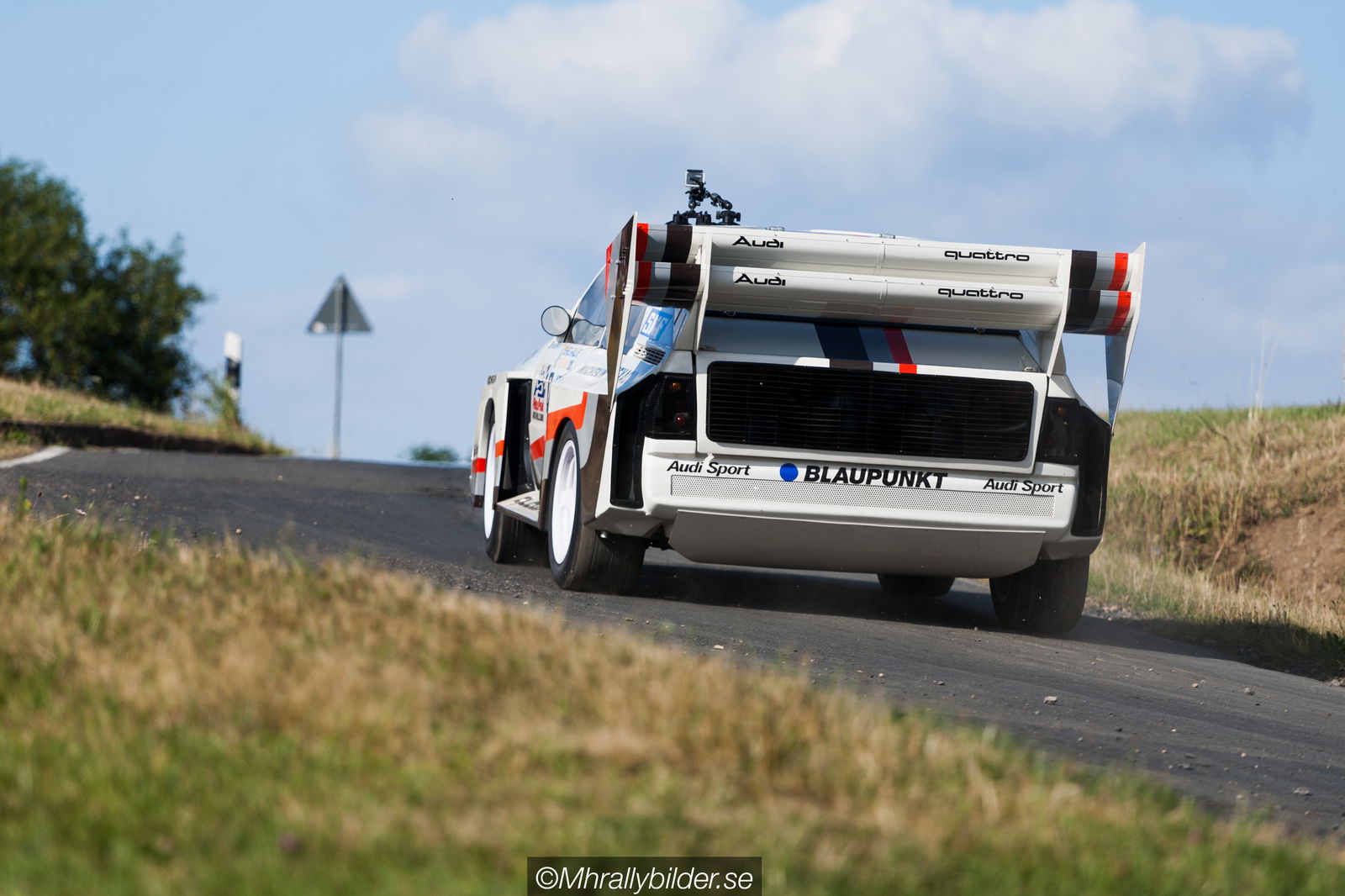
When you say Group B Rally, you say Audi Quattro.
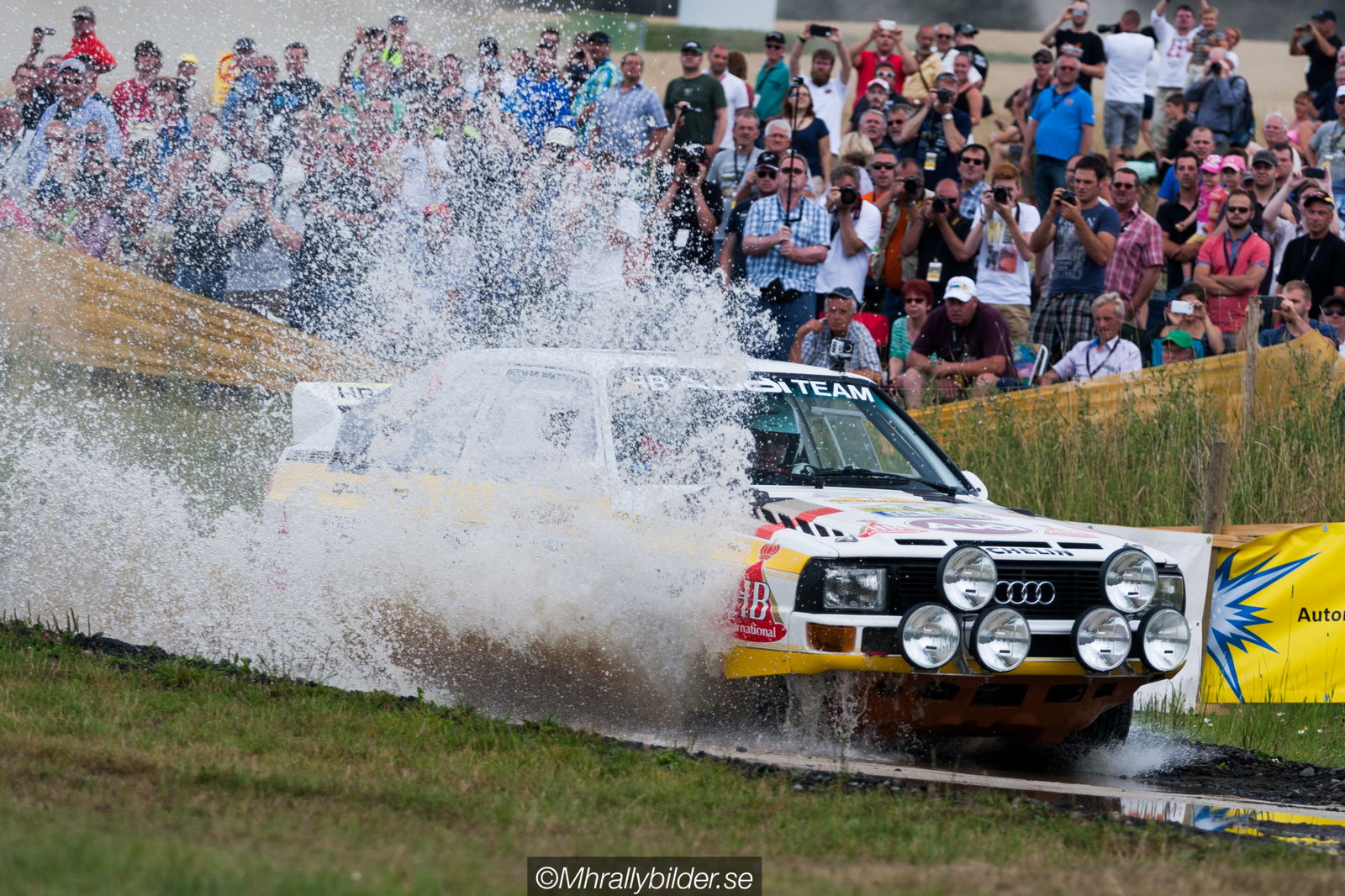
Why? First of all the appearance and output: top versions scoring over 500 AWD hp at 1090 kg with recirculating air through turbo eliminating lag when going off throttle and creating the famous BANG BANG. This allowed the Quattro to win 23 WRC rallies and 2 constructors’ championships in 1982 and 1985 plus two second places in 1983 and 1985. The car displayed in the video and in the pictures is the hill climbs monster that won the 1987’s edition piloted by Walter Röhrl.
Remember Walter Röhrl coming second in the 1983 WRC in the Lancia 037 and winning the 1982? Well, although it was not in an Audi as you may have thought, but in Opel Ascona. However, his main opponent was Michele Mouton, a lady piloting the Quattro, who in the end finished second in 1982. Want to join me on the feels train?
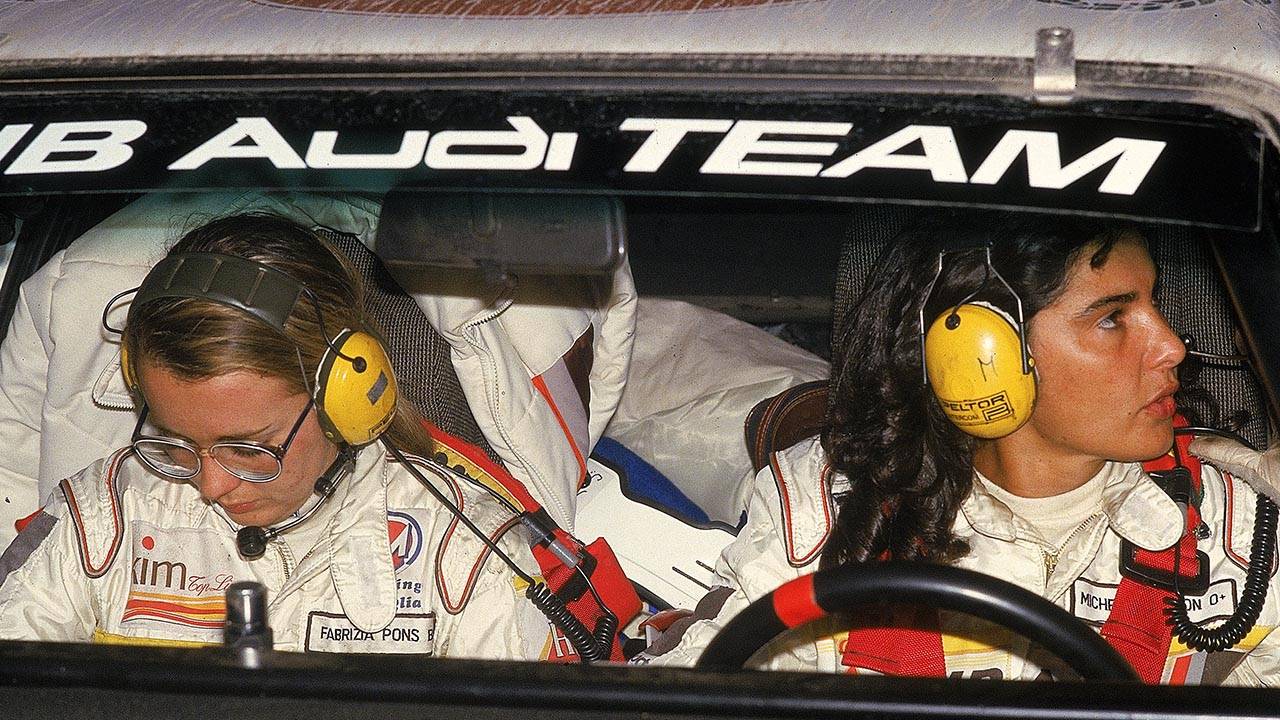
Audi had not originally planned to participate in the African marathon events, but now found it necessary to enter the penultimate round, the Rallye Côte d’Ivoire, due to their title battles with Opel. Just before the start of the event, Mouton received news that her father had succumbed to cancer in his house in Nice. His last wish was that Mouton start the rally. After a first day of over 1,200 kilometres (750 miles) of racing in temperatures over 30 °C (86 °F), she was eight minutes clear of Mikkola and nearly half an hour ahead of title rival Röhrl. Mikkola said that he had never been in such a hot car, and Röhrl estimated that the temperature inside his car reached an “almost unbearable” 70 °C. With just over half of the 5,000 km (3,100 mi) behind, Mouton led from Röhrl by over an hour despite losing 25 minutes due to transmission problems. On the third day, both Mouton and Röhrl struggled with several reliability issues and her lead over Röhrl shrank to 18 minutes. The Toyota Celica GT2000s of Eklund and Waldegård were still over two hours behind. Should Mouton go on to hold off Röhrl, she would reduce Röhrl’s lead in the championship to just two points. As a driver’s seven best results counted towards the championship at the time, Mouton would only need a third place in the RAC Rally to take the title even if Röhrl would win. On the final day, she continued to suffer from mechanical problems and had the complete fuel injection system changed. For the next time control, Röhrl and Mouton arrived almost simultaneously. With only 600 km to go, Mouton went off the road and rolled her car. She drove the severely damaged Quattro for five more kilometres before giving up.
Röhrl inherited the win and became the first two-time world champion in rallying. Having lost her father, Mouton did not dwell on losing the title. Röhrl had earlier conceded that he “would have accepted second place in the championship to Mikkola”, but not to Mouton: “This is not because I doubt her capabilities as a driver, but because she is a woman.” He believed that defeat would have devalued his performances. At the RAC, Mouton edged out Toivonen to take second place behind Mikkola. This result made Audi the first German marque to win the manufacturers’ world title. At the inaugural Autosport Awards gala, Mouton won the International Rally Driver of the Year award
Ferrari 308 GTB
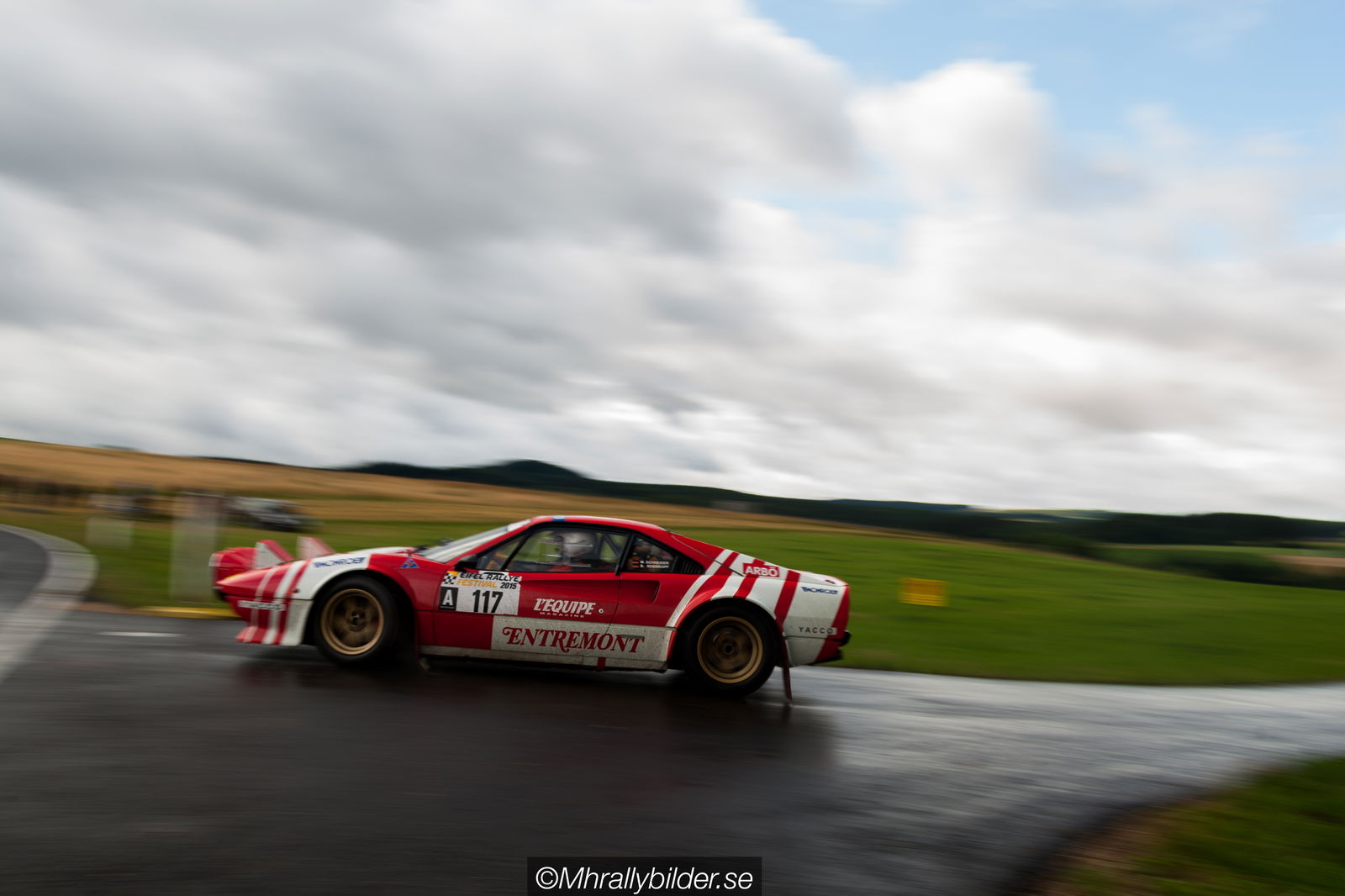
Even more unconventional than the Porsche, the 308 GTBs have never achieved any great wins in rally, because those were creations of privateers. Ferrari was part of FIAT Group just like the Lancia, so Lancia received factory backing for rally domination, while Ferrari received full support in other Ferrari-obvious terrains. Nevertheless, it is impressive to see a 310hp 8000 rpm Ferrari to scream through countryside.
But it is more impressive to see the Enzo doing it.
Peugeot 205 Turbo 16 (T16)
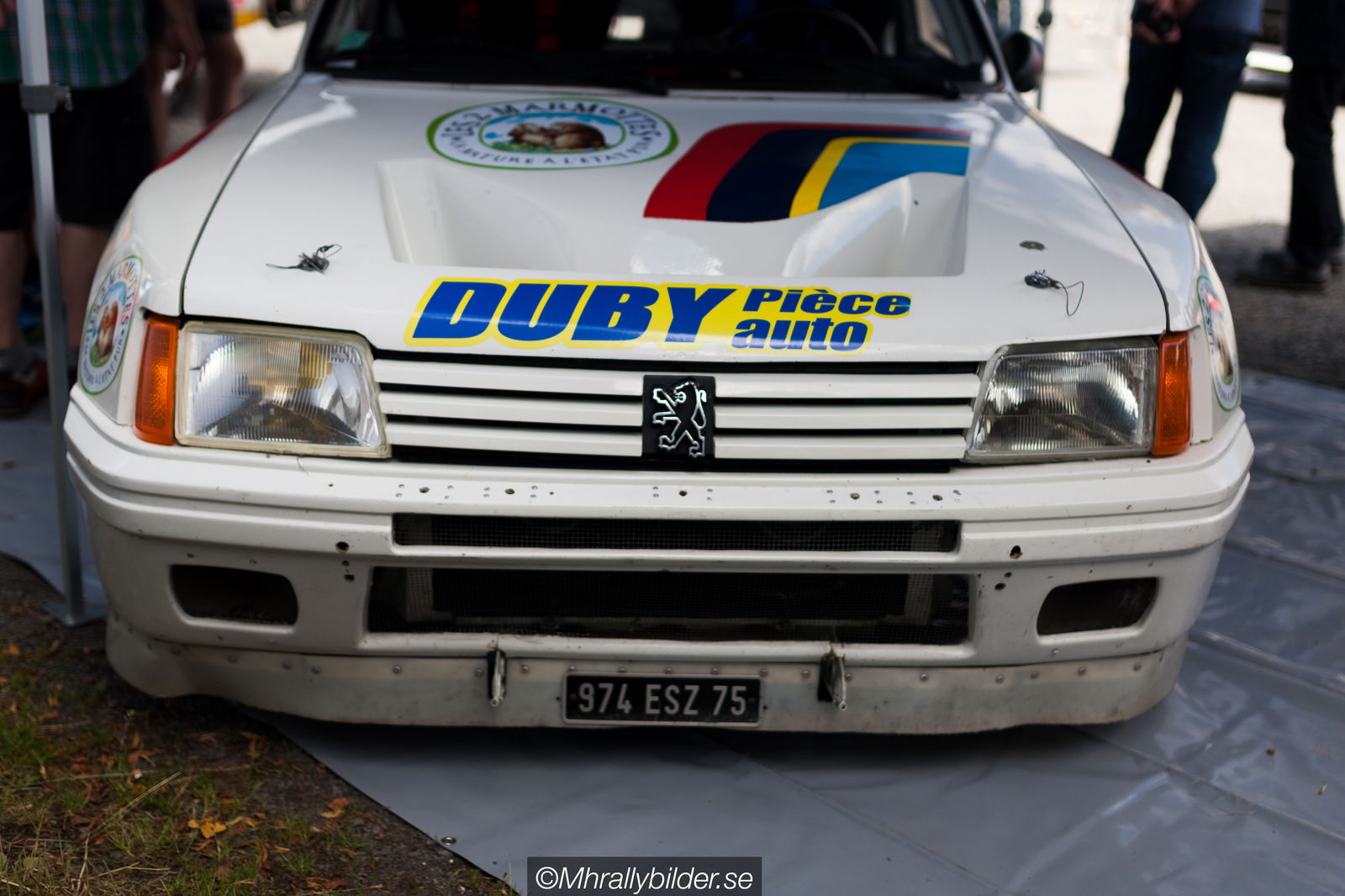
Don’t let its small appearance fool you. 450 all-wheel drive horses on 910 kg allowed it to win 16 WRC stages. The 16 in its name is referring to the amount of valves, so don’t let the wins fool you. It has also won the 1985 drivers’ championship and 1986 constructors’ championship proving this little devil to be highly successful. Speaking of Peugeot’s success, just like Walter Röhrl won the Pikes Peak in 1987, Peugeot did the same in 1988 in a 405 piloted by Ari Vatanen with one hand when required. GoPros are overrated.
Renault 5 Turbo
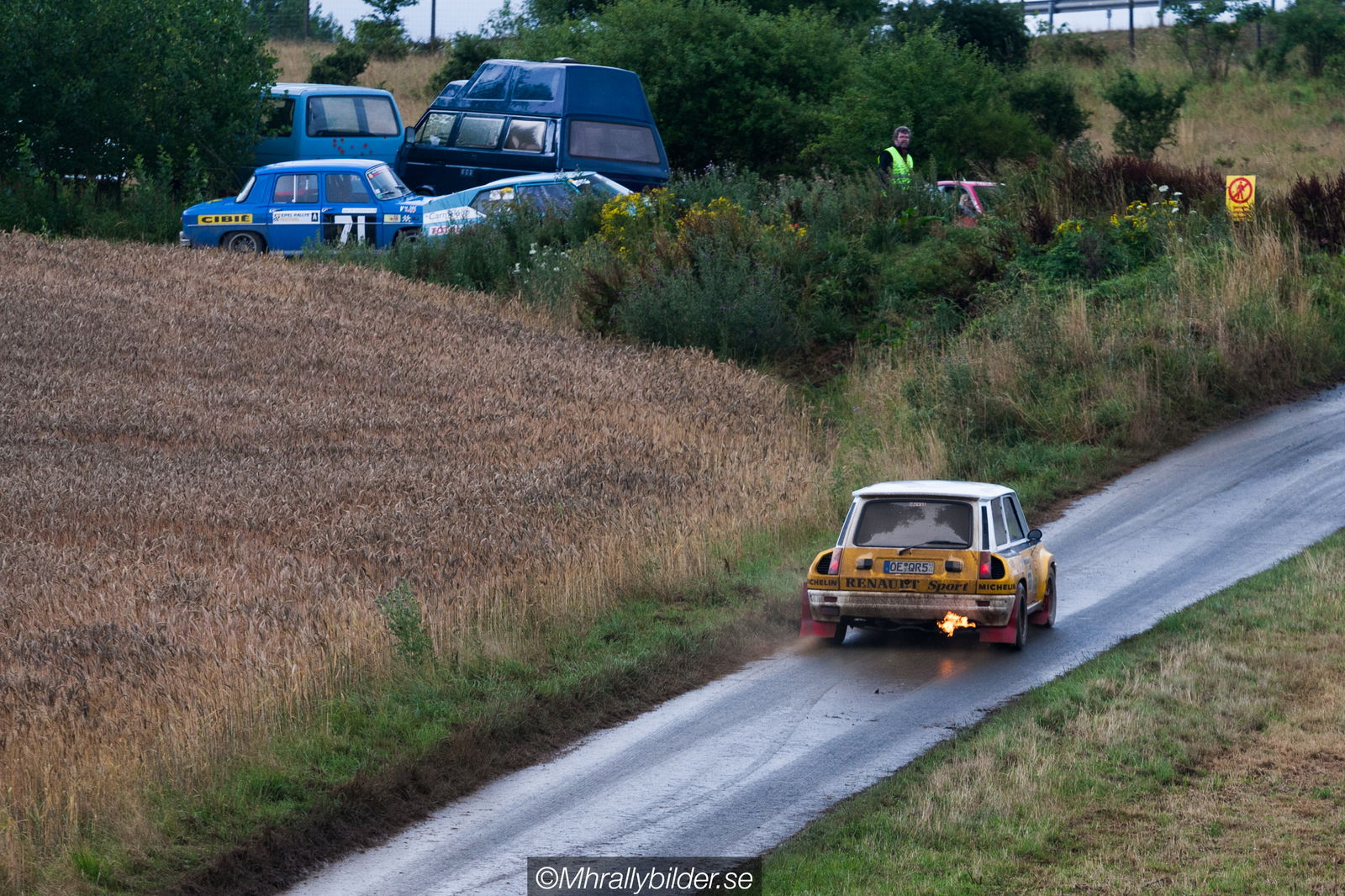
Probably less successful as the previous “Little French Fast Fu**er”, it still managed to grab 4 WRC wins throughout the years after its introduction in 1980 when it became the fastest French production car. Rear-engined, RWD it was packing 160 horses in stock trim or up to 350 hp in hardcore rally version, enough to have fun on such a small and light-weight base (970 kg). Thanks to its successes, the automotive world was blessed with Renault Clio V6 Renault Sport 20 years later.
Mitsubishi Lancer 2000 Turbo
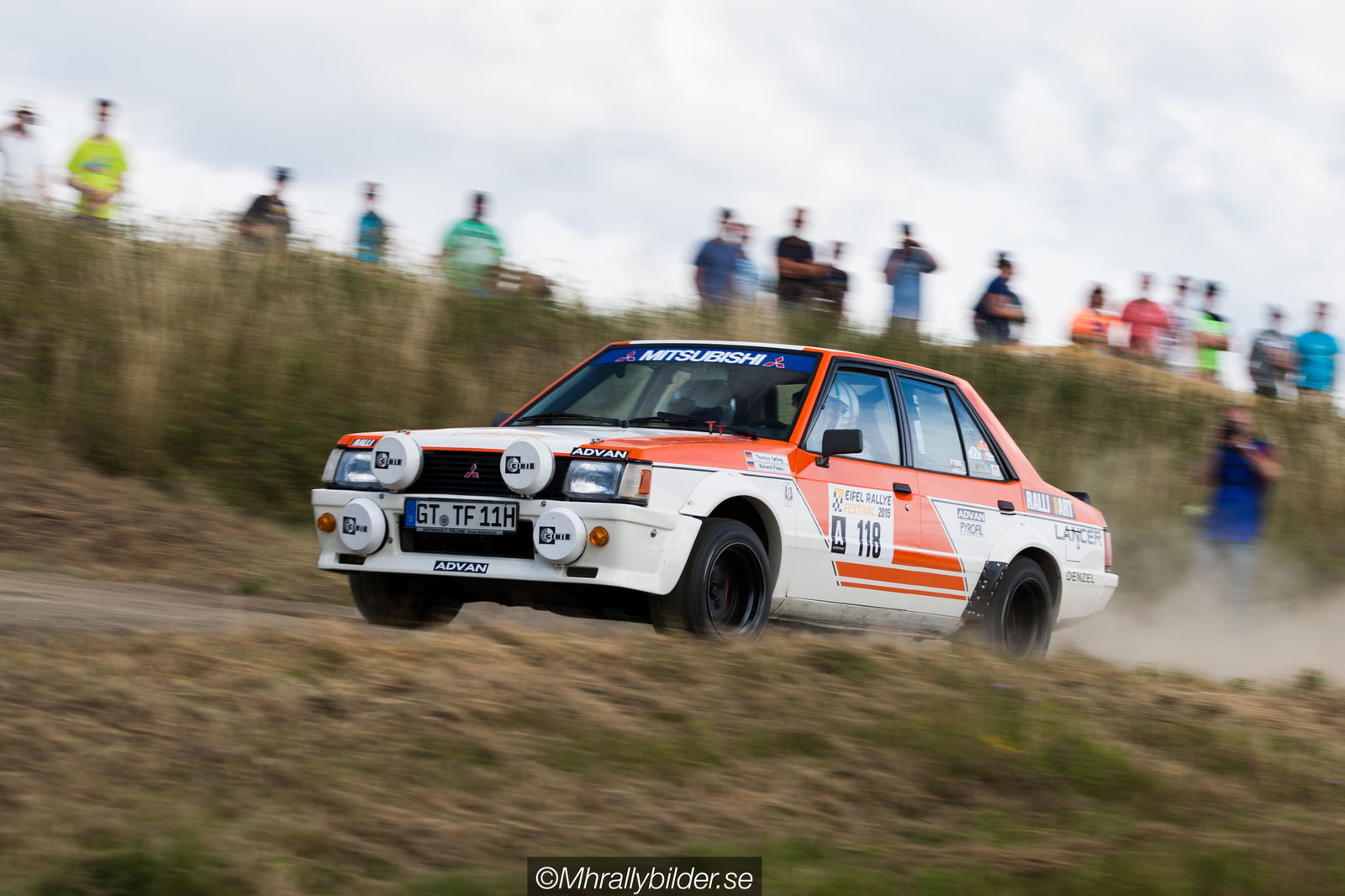
Did you know that first (pre-EVO) Lancers were RWD and their production started all the way back in 1973? This particular model was launched in 1979 and entered the Group B rally, without any successes like its previously-mentioned Japanese brother 240RS. Nevertheless, the Mitsubishi Ralliart team were persistent enough to be blessed with multiple victories a decade later with their EVOs. Until the discontinuation of the EVO in March 2016.
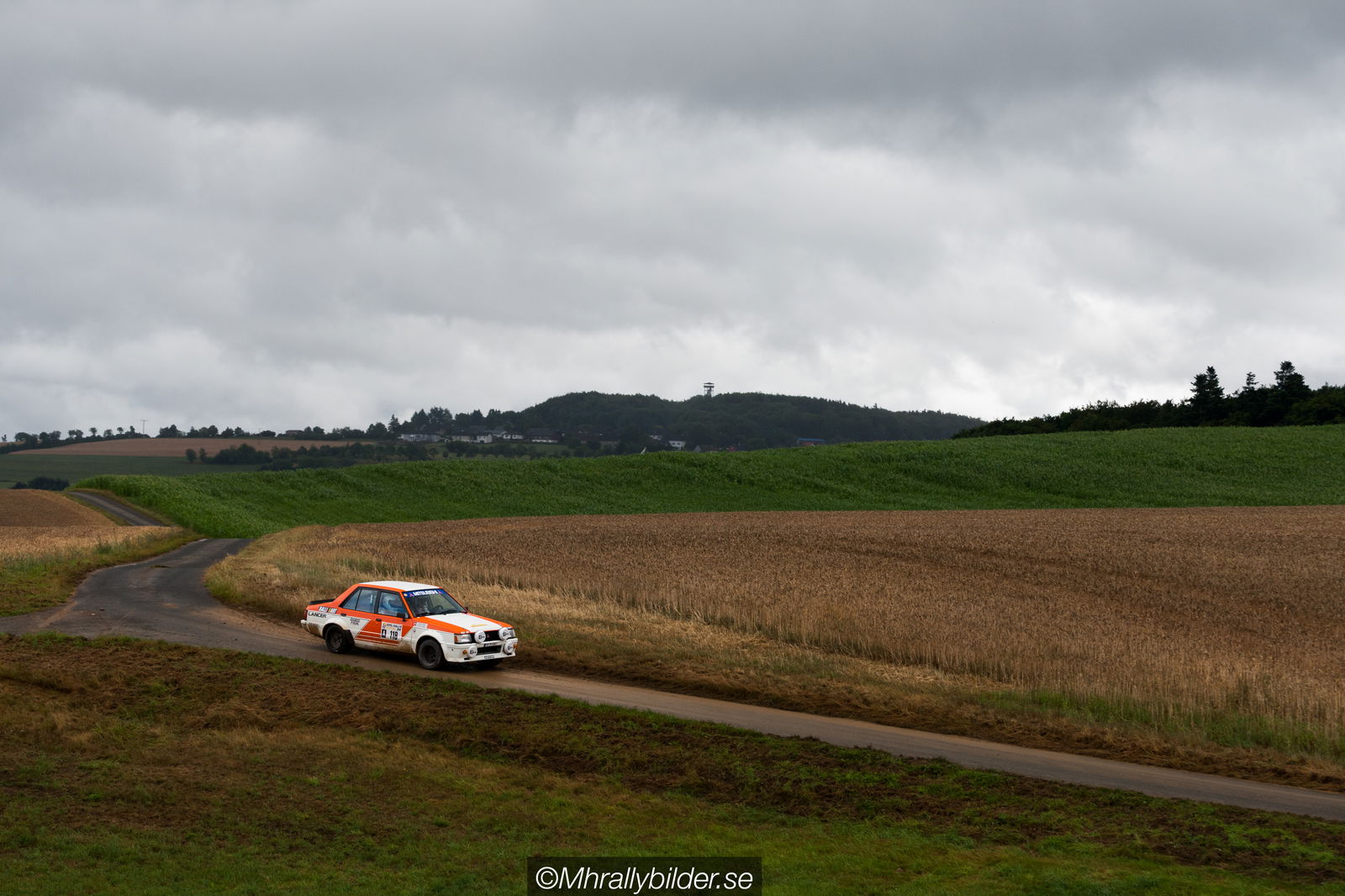
I hope you have enjoyed the article! Let me know what your favorite is and add some classics that are not on the list!
A separate thanks goes out to Martin Hansson for supplying me with the pictures.
Also, if you like rally, subscribe to fellow Carmrade and Mod Melons who writes a lot about interesting rally stuff.
And bonus gallery for you:
Comments
for the last time 959 was never designed for group B. 037 had 325bhp. The delta hf4wd replaced the s4 not integrale. that didn’t come until the 1988 season
The Audi quattro is most definitely my favourite one here, I’d love to go to the Eifel Rallye one day too. When I mentioned it to my girlfriend, she said she’d like to go as well! One day…
Awesome! And really? A group B lada? Huh! Never heard of it! Any more info?
And those Lancias were way ahead of their time!
BTW, the Porsche 959 had a top speed of 199mph
the citroens 1966 monte carlo win was in my eyes, stupid. After a mini won it, it was stripped down, and a set of headlamps were found which didn’t meet homologation rules. Headlamps didn’t make the car any faster, but was disqualified nonetheless, leaving the citroen to win by default